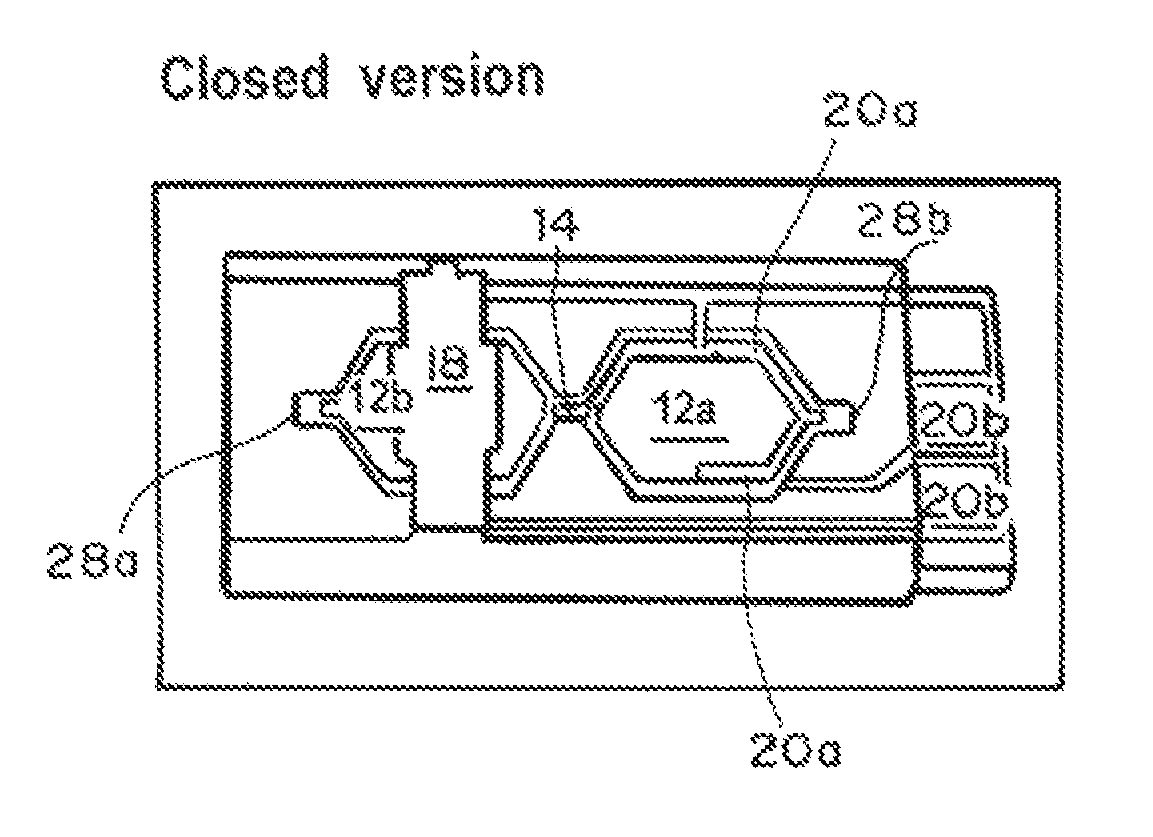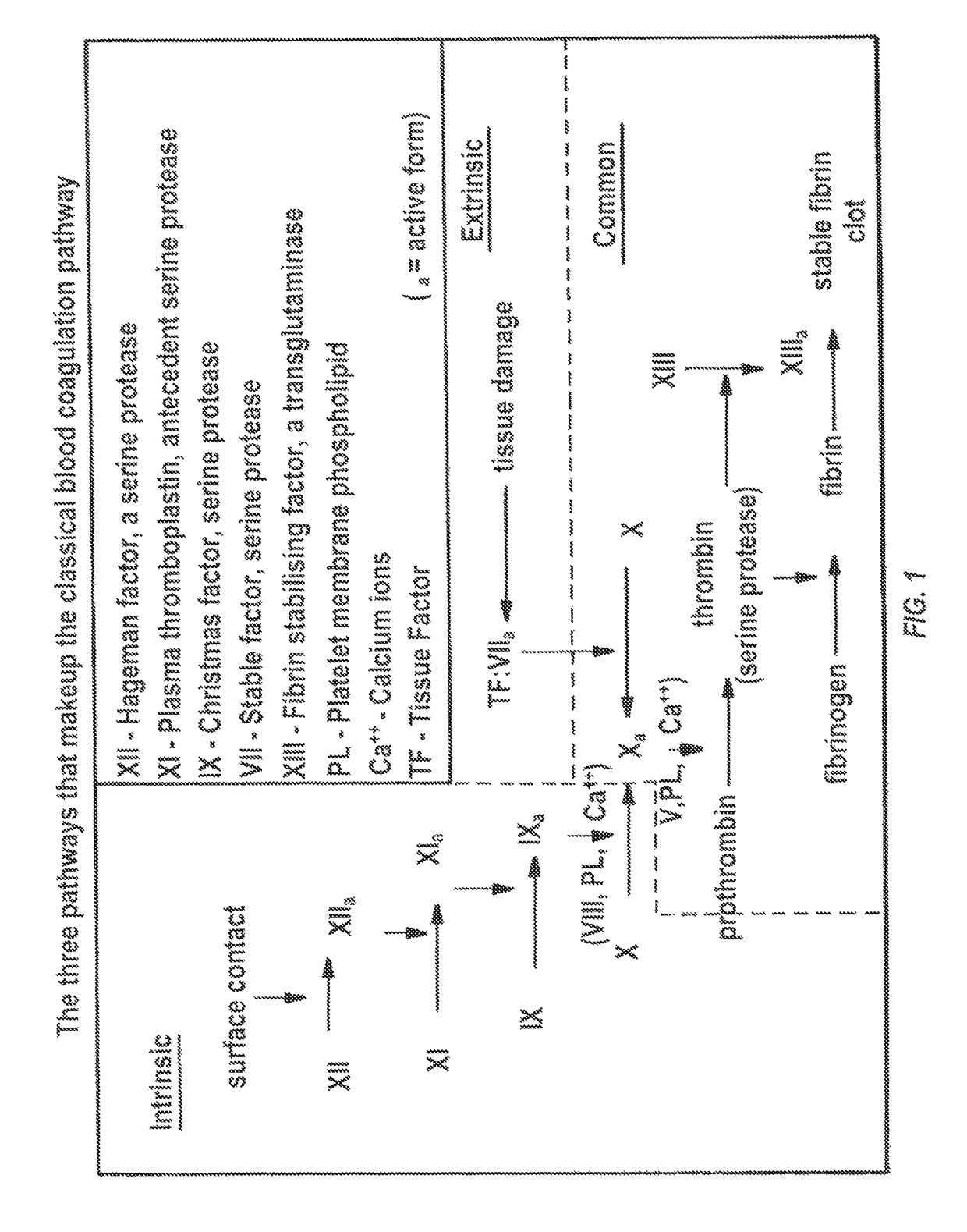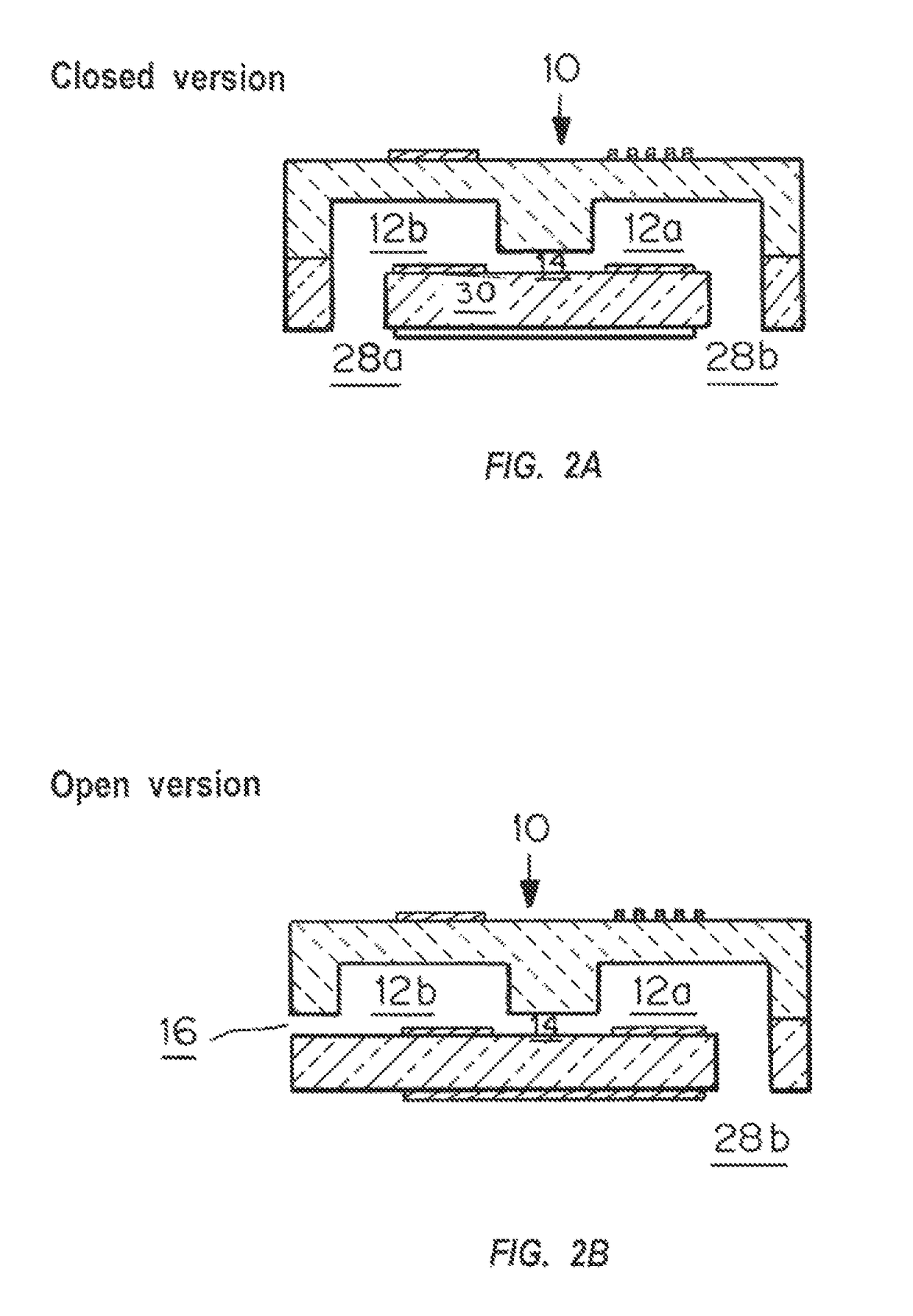Microfluidic chip-based, universal coagulation assay
a microfluidic chip and universal technology, applied in the field of microfluidic chip-based universal coagulation assay devices and readers, can solve the problems of abnormal test results in patients with inhibitors of fibrinogen-to-fibrin reaction, tens of minutes of preparation, and inability to detect abnormal blood loss from damaged vessels, etc., to achieve the effect of optimizing the dosage of anticoagulation drugs and/or
- Summary
- Abstract
- Description
- Claims
- Application Information
AI Technical Summary
Benefits of technology
Problems solved by technology
Method used
Image
Examples
example 1
tion of On-Chip Heating
[0139]A chip was used to demonstrate the effect of the integrated heater (or integrated heater / cooler; preferably a solid state heat pump or ‘Peltier cooler’) structure. A 12 V DC voltage was applied to the heater resistor on the back of the silicon part of the microfluidic chip. Resistances of thermistors were measured inside each chamber (inner thermistors, on the front silicon surface) and on top of each chamber (outer thermistors, on top of the PYREX®) before application of a heater voltage and during heating. Local temperatures increase due to heating were calculated using measured resistances and temperature coefficients of resistances as reported earlier. Room temperature was approximately 27° C. Average local temperature increases after approx. 2 min of unregulated heating were:[0140]outer thermistors: ΔT=20.3 K[0141]inner thermistors: ΔT=23.8 K.
example 2
nt of Blood Clotting
[0142]Materials and Methods
[0143]Blood was harvested from a patient using commercially available lancing devices. 10 μL of blood were obtained and pipetted into an Eppendorf tube. Saline was used as a buffer solution. The blood sample was mixed in the Eppendorf tube through up and down pipetting five times with one of the following reagents:[0144]1 μL of buffer solution (called sham control),[0145]1 μL of buffer solution containing the anticoagulant edoxaban at a concentration of 300 ng / mL,[0146]1 μL of buffer solution containing the anticoagulant edoxaban and the anticoagulant reversal agent PER977, both at a concentration of 300 ng / mL.
[0147]Edoxaban is a commercially available anticoagulant. PER977 (ciraparantag) is an investigational drug that is designed to reverse the effect of edoxaban. Immediately after mixing, 2.5 μL of each blood sample was pipetted into a closed device chip. The chip was inserted into its reader, and both IR light and impedance measurem...
PUM
| Property | Measurement | Unit |
|---|---|---|
| wavelength | aaaaa | aaaaa |
| wavelength | aaaaa | aaaaa |
| a wavelength | aaaaa | aaaaa |
Abstract
Description
Claims
Application Information
 Login to View More
Login to View More - R&D
- Intellectual Property
- Life Sciences
- Materials
- Tech Scout
- Unparalleled Data Quality
- Higher Quality Content
- 60% Fewer Hallucinations
Browse by: Latest US Patents, China's latest patents, Technical Efficacy Thesaurus, Application Domain, Technology Topic, Popular Technical Reports.
© 2025 PatSnap. All rights reserved.Legal|Privacy policy|Modern Slavery Act Transparency Statement|Sitemap|About US| Contact US: help@patsnap.com



